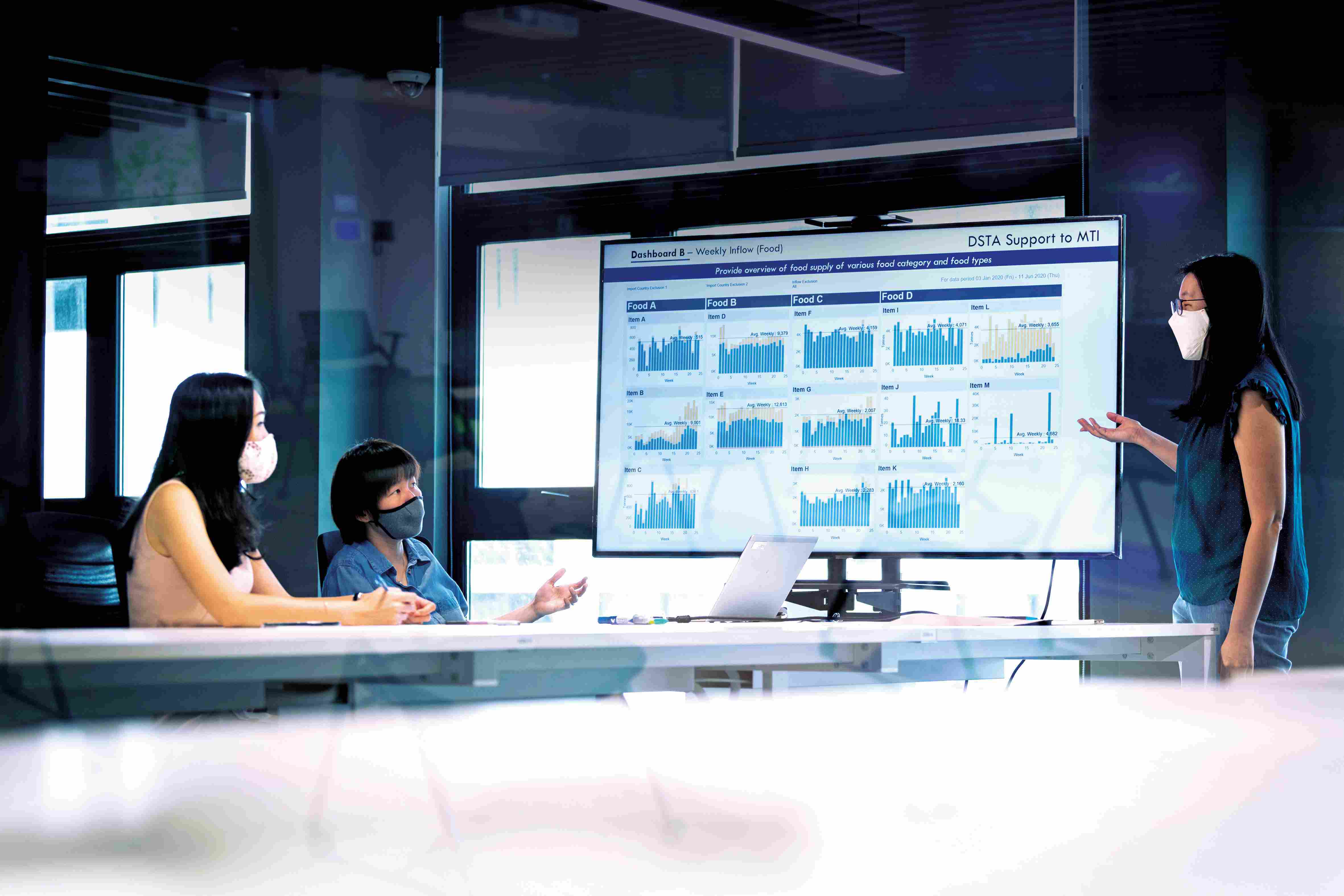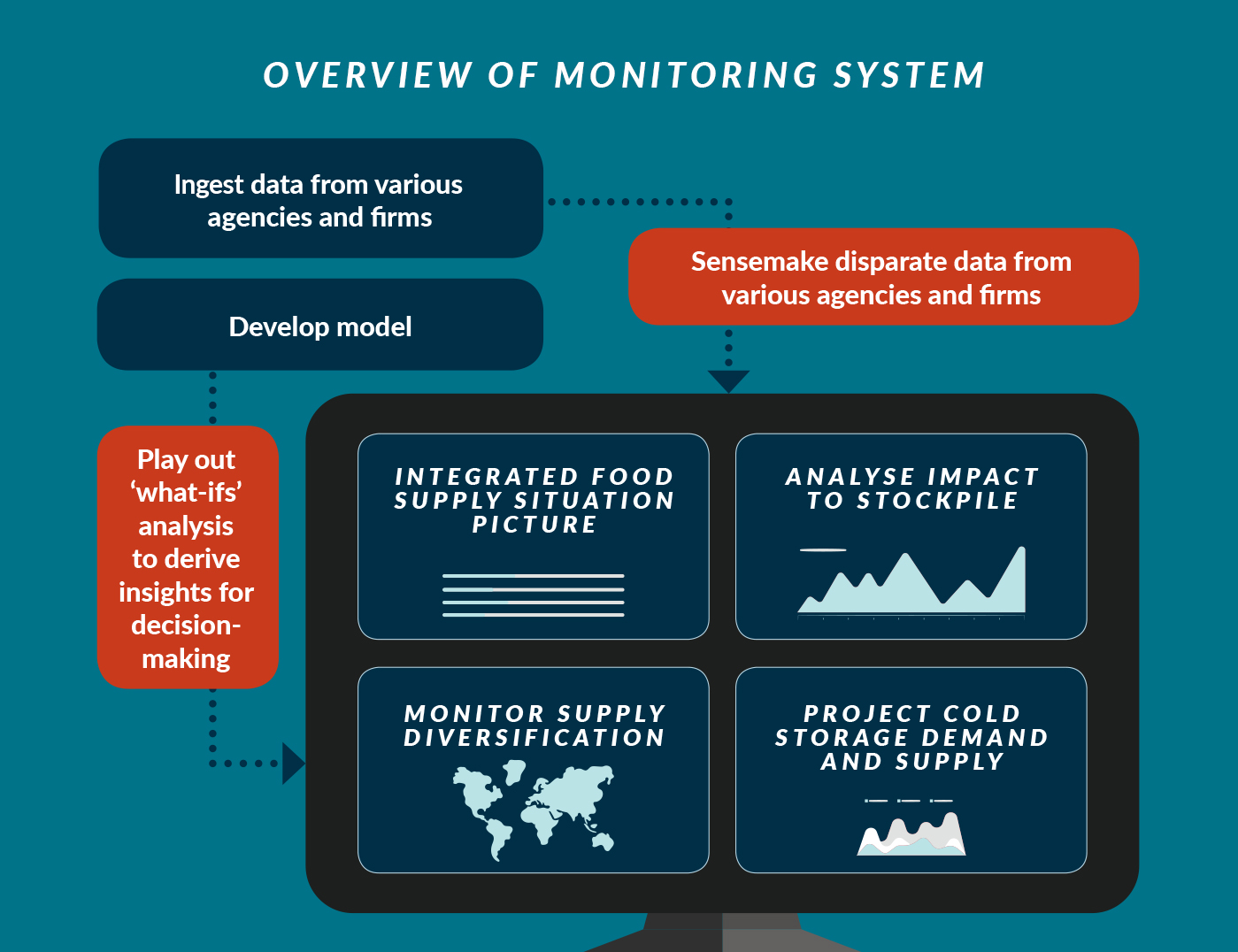Assessing Food Security
Empty food shelves in supermarkets are a big no-no – that’s why a DSTA team came together to deliver a monitoring system for Singapore’s food supply chains.

“Global production capacities were affected due to COVID-19-related restrictions, which caused some countries to restrict food exports. This inevitably impacted Singapore’s food supplies. It became crucial to have a better overview of our food supplies, and help strengthen the resiliency of our food supply chains,” said Cluster Head (General Products & Services) Choo Liling.
We came together with the Ministry of Trade and Industry (MTI) to design and develop a monitoring system that integrated data from multiple government agencies and local supermarkets. This provided a common situation picture of the national food supply and demand.
To accomplish this, all data had to be standardised first, as every entity adopted different data terminologies and resolutions, and extracted data based on different reporting periods.
“Our immediate challenge was to understand and rationalise the various terms and considerations used, clean and prepare the data, as well as define the data template and terminology used. That would enable us to fuse disparate data across entities,” said Principal Analyst (DSTA Masterplanning and Systems Architecting) Teng Oon Kee.
The next step? Frame the problem and kick-start the development of risk simulation models to perform ‘what-if’ assessments. Leveraging prior knowledge and experience from past projects with the SAF, the team built a new risk modelling capability into the monitoring system to provide accurate projections of food stockpile with dynamic time elements, as well as consumption and supply disruption scenarios.
For instance, the monitoring system can simulate supply restrictions and unexpected demand, which helps MTI study the impact on national stocks and assess the need for a stockpile activation amid potential disruptions. This would also help identify bottlenecks and early mitigation measures.

Even at this point, things were anything but a piece of cake. To allow more agencies to gain access to the monitoring system, the team made the challenging switch to a new format that was more widely available.
“It was a difficult decision as many of us had already put in many hours of work to create the monitoring system’s prototype. But we decided the change was necessary to facilitate the deployment and proliferation to MTI and various agencies. While pushing ahead with this change, we chose to not just do a simple translation, but instead brought in our colleagues proficient in user experience design to review the layout design and even the monitoring system’s colour scheme to improve usability,” said Senior Engineer (Information) Chia Wei Jie.
The system has since been deployed to MTI, where it has transformed their manual data processing process and enabled quick insights and answers. That’s certainly some food for thought for the long term!
